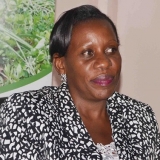Abstract: Understanding the evolution of land use/land cover change (LULCC) and how it shapes current and future ecosystem services (ES) supply potential remains critical in sustainable natural resource management. Community perception of historic LULCC was reconciled with previous study via remote sensing/geographical information systems using recall data in the Budongo–Bugoma landscape in Uganda. Then, a CA-Markovian prediction model of a LULC situation in 2040 under business as usual (BAU) and forest restoration scenarios was constructed. Additionally, we assessed the perceived proximate and underlying drivers of LULCC, and how LULCC shapes ecosystem services potential using household surveys. The perceived LULCC trend for the past three decades (1990–2020) corresponded with previous studies showing grassland, bushland, tropical high forest, and wetland cover declined greatly, while subsistence farmland, commercial farmland, and built-up areas had a great increment. The predicted LULC under (i) the business as usual scenario showed a continued decline of natural LULC while anthropogenic LULC increased greatly, tending to cover half of the landscape area; (ii) forest restoration under different levels showed an improvement of forest cover and other native LULC classes with a decline in mostly subsistence farmland. The proximate drivers were in three principal components (soil infertility, subsistence farming, drought; infrastructural development, commercial farming, overstocking of livestock, pest and disease challenges; tree planting), while underlying drivers were in two principal components (technology adoption, corruption of environment stewards, policy implementation gaps; cultural gaps). Food and cash crops were perceived to be the most important ecosystem services in the landscape. Generally, the landscape ES supply potential was dwindling and predicted to continue with a similar trend under BAU, despite the increment in ES contribution of subsistence and commercial farmland. Forest restoration would slightly improve the landscape ES potential but would cause a decline in subsistence farmland, which would result in either a threat to food/livelihood security or a livelihood shift. We recommend combined interventions that seek to achieve a progressive frontier that achieves development needs and priorities based on national need such as food security through local level production with recognition for sustainable availability of ecosystem services.
Interconnectedness of Ecosystem Services Potential with Land Use/Land Cover Change Dynamics in Western Uganda
EfD Authors
Country
Sustainable Development Goals
Publication reference
Kusiima, S. K., Egeru, A., Namaalwa, J., Byakagaba, P., Mfitumukiza, D., Mukwaya, P., Mensah, S., & Asiimwe, R. (2022). Interconnectedness of Ecosystem Services Potential with Land Use/Land Cover Change Dynamics in Western Uganda. Land, 11(11), 2056. https://doi.org/10.3390/land11112056

